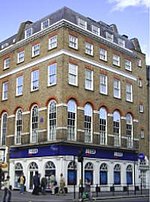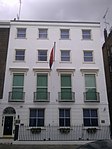Elliott & Fry

Elliott & Fry was a Victorian photography studio founded in 1863 by Joseph John Elliott and Clarence Edmund Fry. For a century, the firm's core business was taking and publishing photographs of the Victorian public and social, artistic, scientific and political luminaries. In the 1880s, the company operated three studios and four large storage facilities for negatives, with a printing works at Barnet. The firm's first address was 55 & 56 Baker Street in London, premises they occupied until 1919. The studio employed a number of photographers, including Francis Henry Hart and Alfred James Philpott in the Edwardian era, Herbert Lambert and Walter Benington in the 1920s and 1930s and subsequently William Flowers. During World War II, the studio was bombed and most of the early negatives were lost; the National Portrait Gallery currently holds all of the surviving negatives. With the firm's centenary in 1963, it was taken over by Bassano & Vandyk.
Excerpt from the Wikipedia article Elliott & Fry (License: CC BY-SA 3.0, Authors, Images).Elliott & Fry
Baker Street, London Marylebone
Geographical coordinates (GPS) Address Nearby Places Show on map
Geographical coordinates (GPS)
| Latitude | Longitude |
|---|---|
| N 51.518888888889 ° | E -0.15638888888889 ° |
Address
55 Baker Street
Baker Street 55
W1U 8EW London, Marylebone
England, United Kingdom
Open on Google Maps










